Column: ‘This is crazy’: A 102-year-old WWII vet gets a $526 gas bill on top of crippling home-care costs
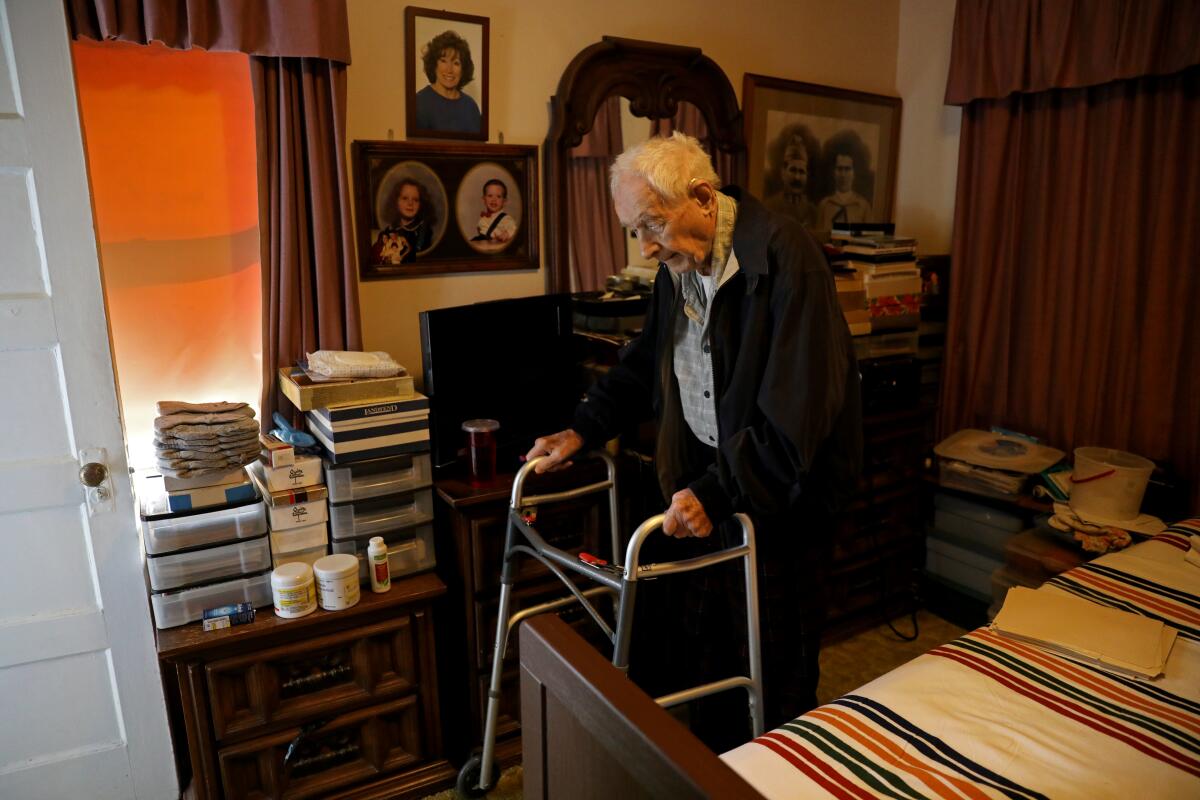
- Share via
Paul Hult’s problems began about a year and a half ago, when he tripped and fell in the little Hollywood bungalow he has lived in since the 1950s.
“I got bruised,” said the 102-year-old U.S. Army veteran, a cryptologist whose job was to crack enemy codes while stationed in Northern Africa and Europe during World War II.
Hult wore a plaid shirt and was seated in an easy chair with a walker at his feet when I visited him the other day. He insisted he wasn’t badly injured when he took his fall. But he’d been living alone since his wife, Zora, died in 2005, and loved ones told him it was time for live-in healthcare aides.
The problem, as millions of people know all too well, is that eldercare can burn through savings in a flash.
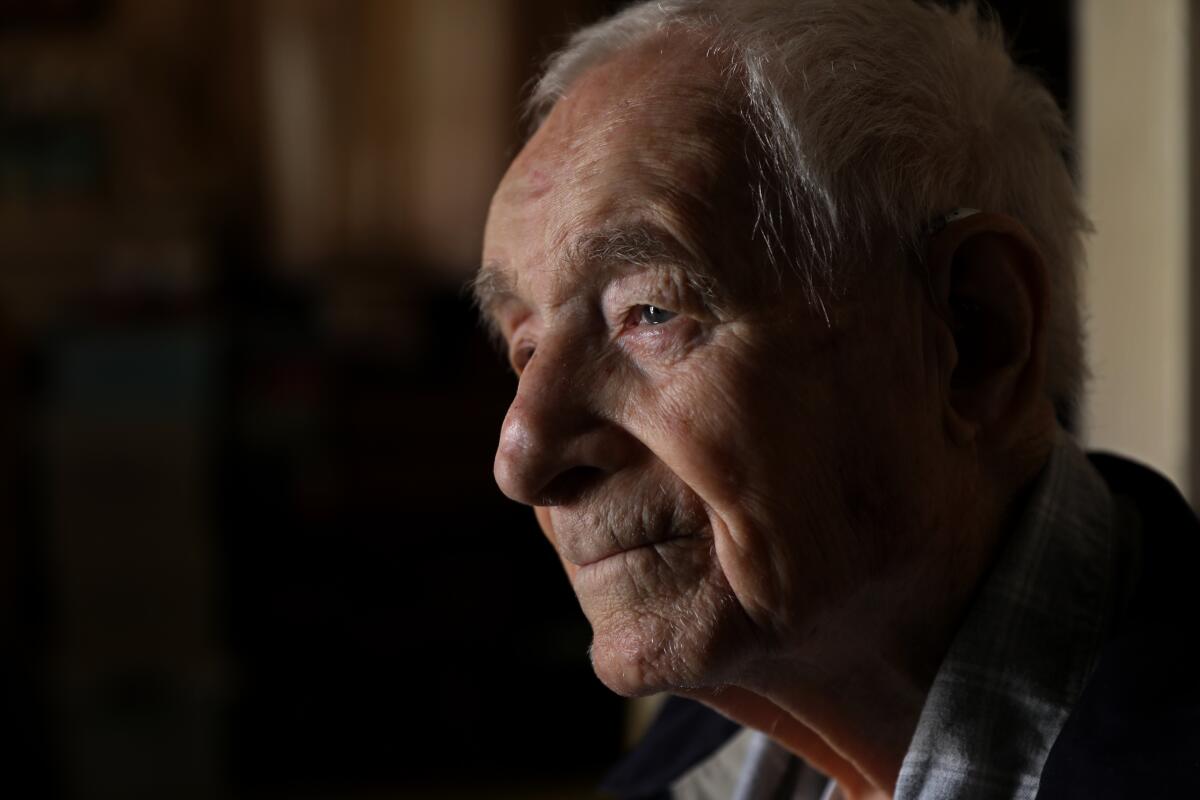
“He’s going to be running out of money very shortly,” said Silvia Moreno, who is married to Hult’s stepgrandson, Jim.
And that was before the killer gas bills began landing in Hult’s mailbox.
Hult’s December tab from Southern California Gas was $418.94. His January bill listed a past-due amount of $229.11 and new charges of $526.07 — an outstanding total of $755.18.
“I just don’t know whether I’ll be able to keep having [help],” said Hult, referring to his caretakers.
Hult, who worked as a railroad company switchman for three decades after his military service, has plenty of company. Customers up and down the state have been hit with astronomical bills for the crime of trying to stay warm. SoCalGas reps have said customers paid roughly twice as much this January as they did a year ago, claiming the utility had no choice but to pass on the increased cost of wholesale gas.
That’s a convenient explanation, but not an acceptable one. Customers like Hult didn’t have enough fair warning or information about how to get assistance, or to sign up for spreading unmanageable spikes over multiple bills. The most vulnerable customers — including older adults on fixed incomes — were the hardest hit.
California is about to be hit by an aging population wave, and Steve Lopez is riding it. His column focuses on the blessings and burdens of advancing age — and how some folks are challenging the stigma associated with older adults.
Jamie Court of Consumer Watchdog blames the price spike on mismanagement of gas reserves and profiteering by wholesale providers, with lots of questions still unanswered.
“Whoever was selling the gas made a fortune,” said Court, who demanded that elected officials get to the bottom of it.
In January, I began hearing from older people whose bloated gas bills followed higher prices for breakfast, lunch and dinner— just about everything. Carlos Gonzalez, an 83-year-old Mid-City resident, told me his gas bill tripled in January. He called it catastrophic and worried that anyone living on the edge could end up on the street.
I heard about Hult’s situation from one of his neighbors.
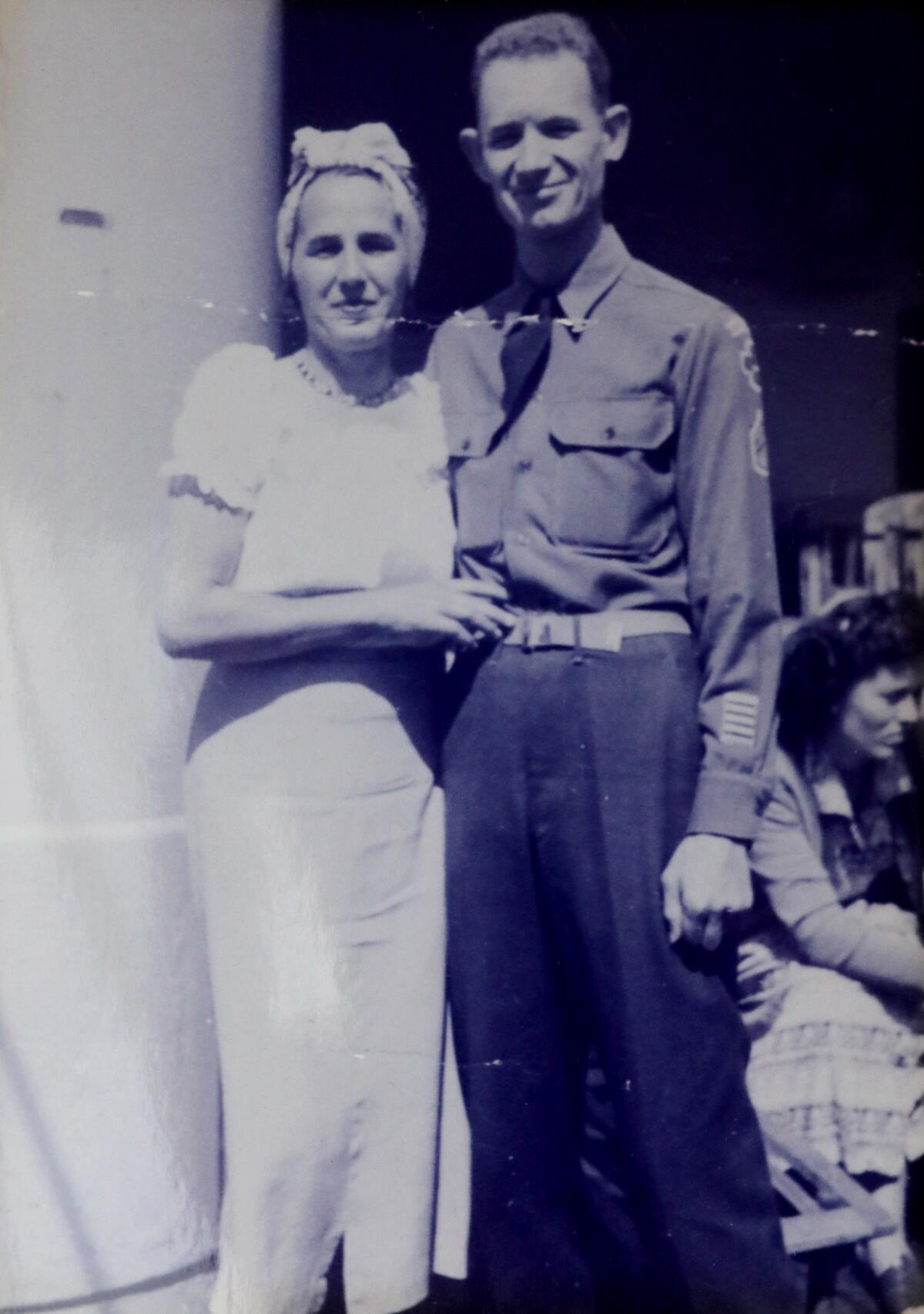
“This is crazy,” said the neighbor wrote. “How can our politicians expect people like Paul — who served his country and survived the Great Depression — to now be able to afford $500 monthly gas bills?”
The most outrageous thing about Hult’s bill is the size of his home. There’s a small kitchen, a bedroom and a main living area. And it’s in sunny California, not Minnesota, where Hult was born.
Hult told me he keeps the heat in the low 70s so he doesn’t catch a chill, but still. There’s only one wall heater for the entire house, and the hot water heater, the gas stove and the dryer don’t get much of a workout.
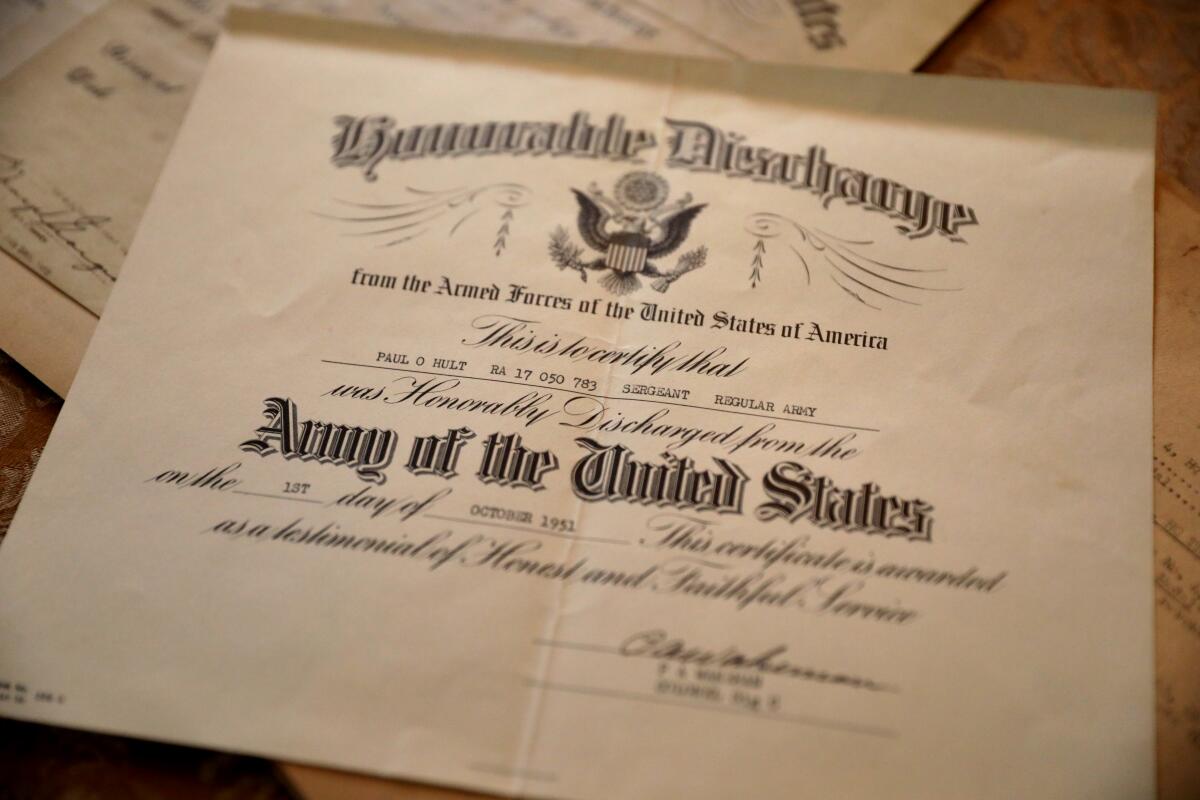
He’s actually lucky in some ways — he said he gets excellent healthcare through the Department of Veterans Affairs, and his rent is only $500 a month. That’s partly because of the kindness of the apartment complex owner and the fact that Hult worked for decades as the manager of the 16-unit property, earning a break on market rates.
But since the healthcare aides began, Moreno said, Hult’s bank account has been just about wiped out. She said Hult’s combined monthly income from a pension, Social Security and VA benefits is roughly $2,500, but the majority of that goes to live-in helpers, even though Hult is on his own sometimes. When he does have in-home care, the aides sleep on the sofa.
Moreno said Paul gets help from the VA, which pays for 20 hours of in-home care per week. But that’s not enough to cover the expense, and she and her husband are thinking of taking out a loan to pay the workers.
I briefly mentioned Hult’s situation two weeks ago in a column about the population of older adults on skid row, and several readers offered to help him pay his gas bill. Hult had a quick response to that.
“Oh, I don’t want any donations,” he said. “Oh no, no. I’m making enough money. … I’m well off compared to others.”
And Hult said he’s trusting that his gas bills will go down.
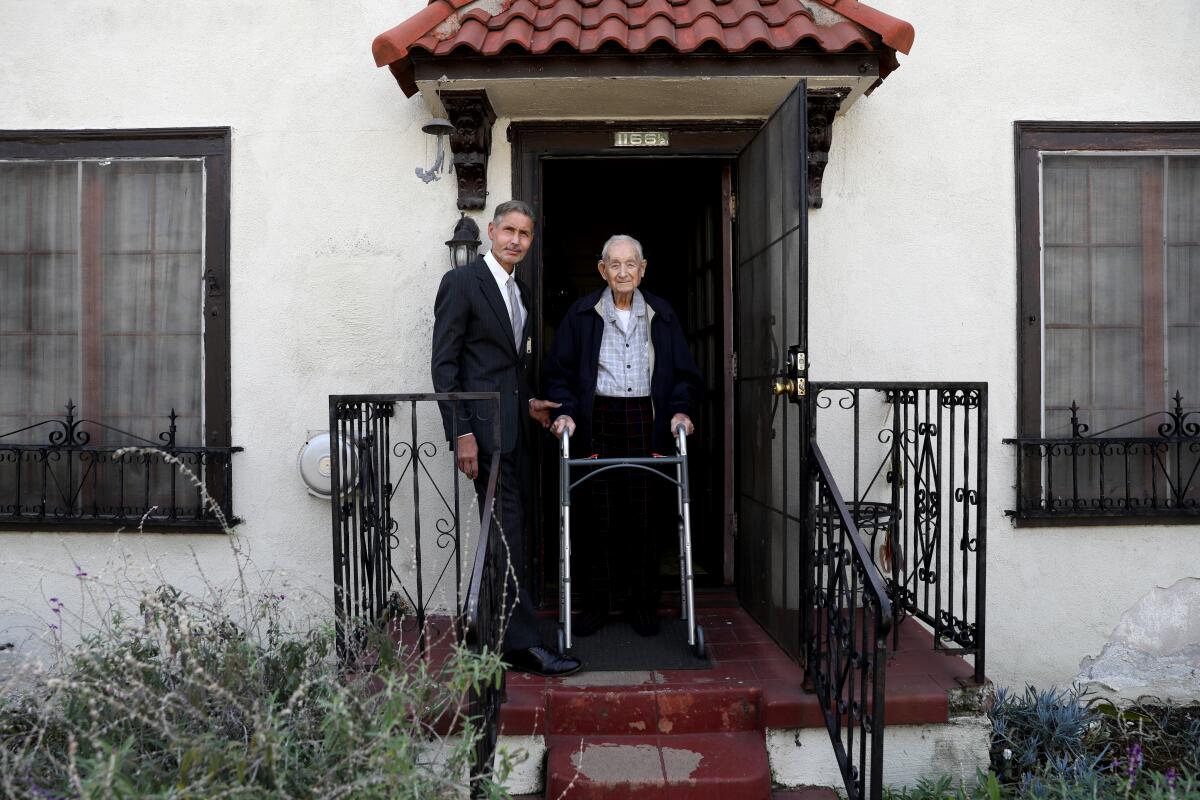
Doug Haines, a neighbor and the current manager of the bungalows, dropped by Hult’s apartment and said he looked into signing up Hult for a break on his energy costs but found that he doesn’t qualify.
“But all his money goes to provide for his health care, as anyone would at that age,” Haines continued. “The alternative is Paul would have to go into a home, and my father, who just passed away, he was in a home and it was $8,000 a month. I mean, who can afford that?
“You would think that the government would take a look at these situations and say we want to assist people who are staying at home … and saving the government money,” Haines said. “And we should be providing for them, particularly because of not only Paul’s age, but Paul’s contributions to this country.”
Haines called Hult’s refusal to accept donations a product of his “generational ethic.”
“But Paul,” Haines added, “it’s not help. You already paid into society. You worked all your life. … Other people are making a lot of money now, and they didn’t have to go to war and they didn’t suffer during the Depression.”
Hult said he’s not sure what caused the gas price fiasco, or who’s profiting, but he’s banking on the prices going back down as the weather warms. Even if that’s true, he’ll still be a prime example of how the cost of aging can be crippling.
“Putting him in an assisted-living situation isn’t going to work because that’s very expensive, and the VA has a long waiting list for housing,” Moreno said.
And how about moving in with family?
“He wants to be independent,” said his stepgrandson Jim. “And he thinks he doesn’t even need 24/7 care because he is still the brave soldier.”
More to Read
Sign up for Essential California
The most important California stories and recommendations in your inbox every morning.
You may occasionally receive promotional content from the Los Angeles Times.











